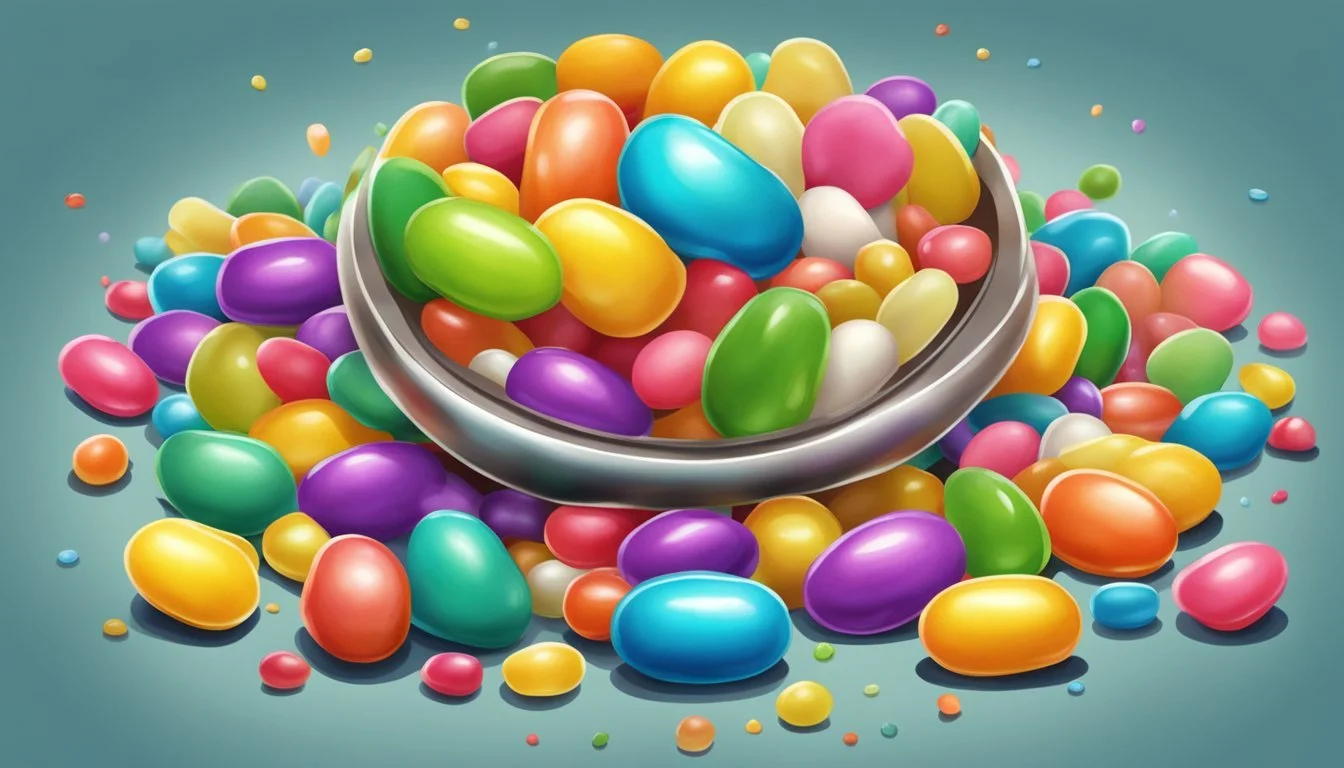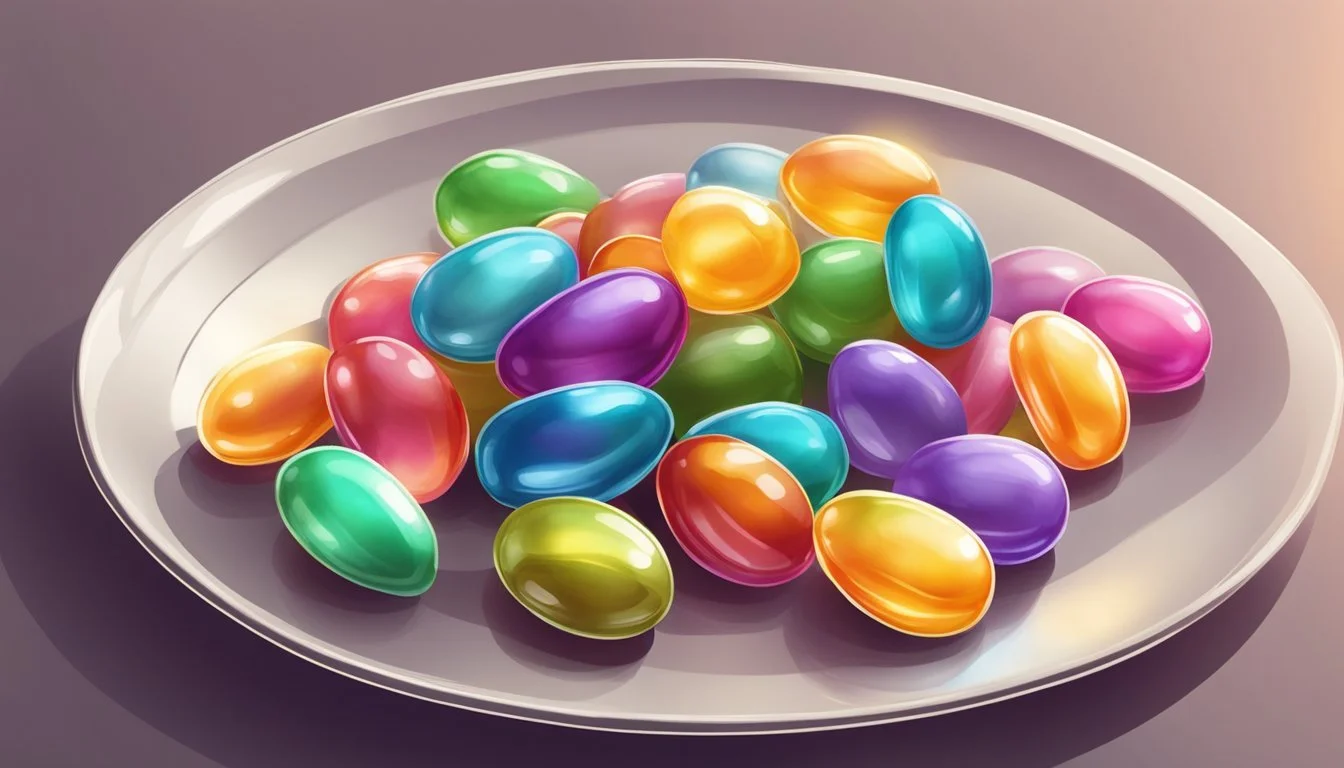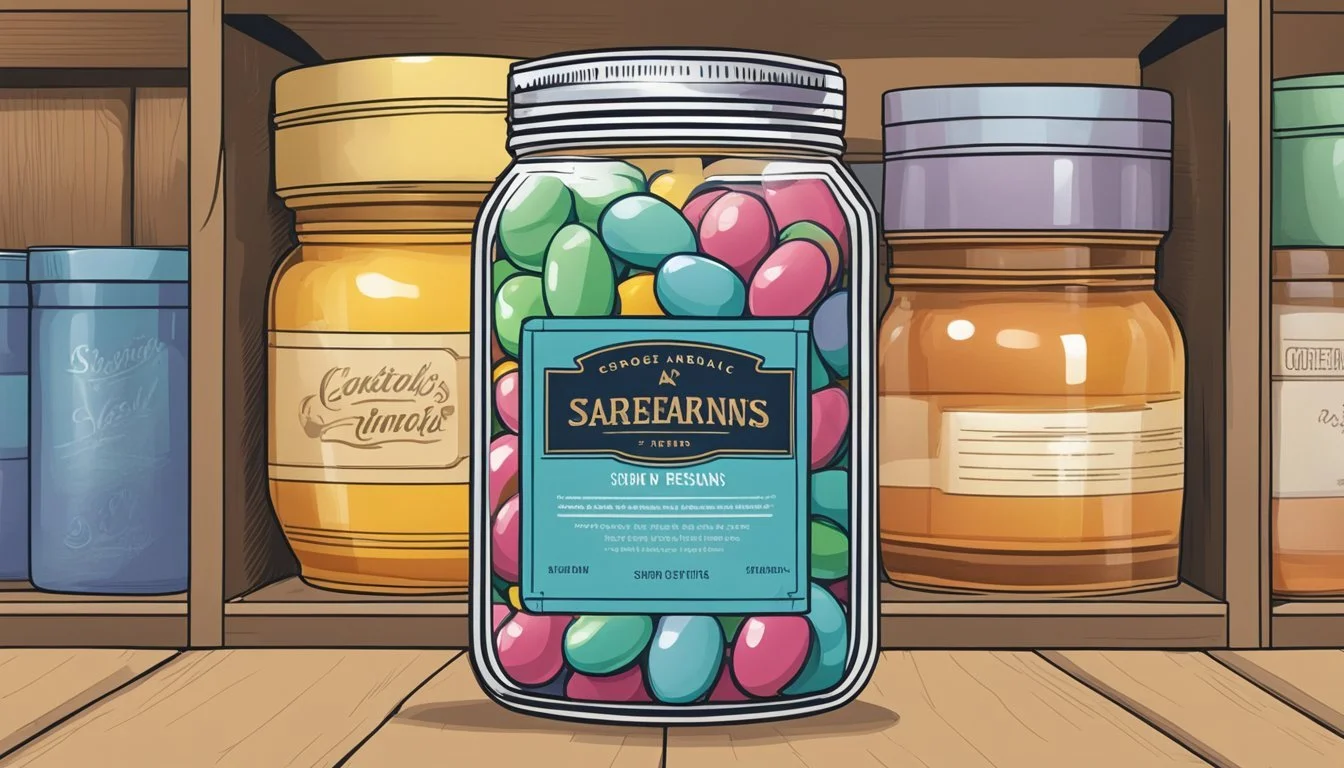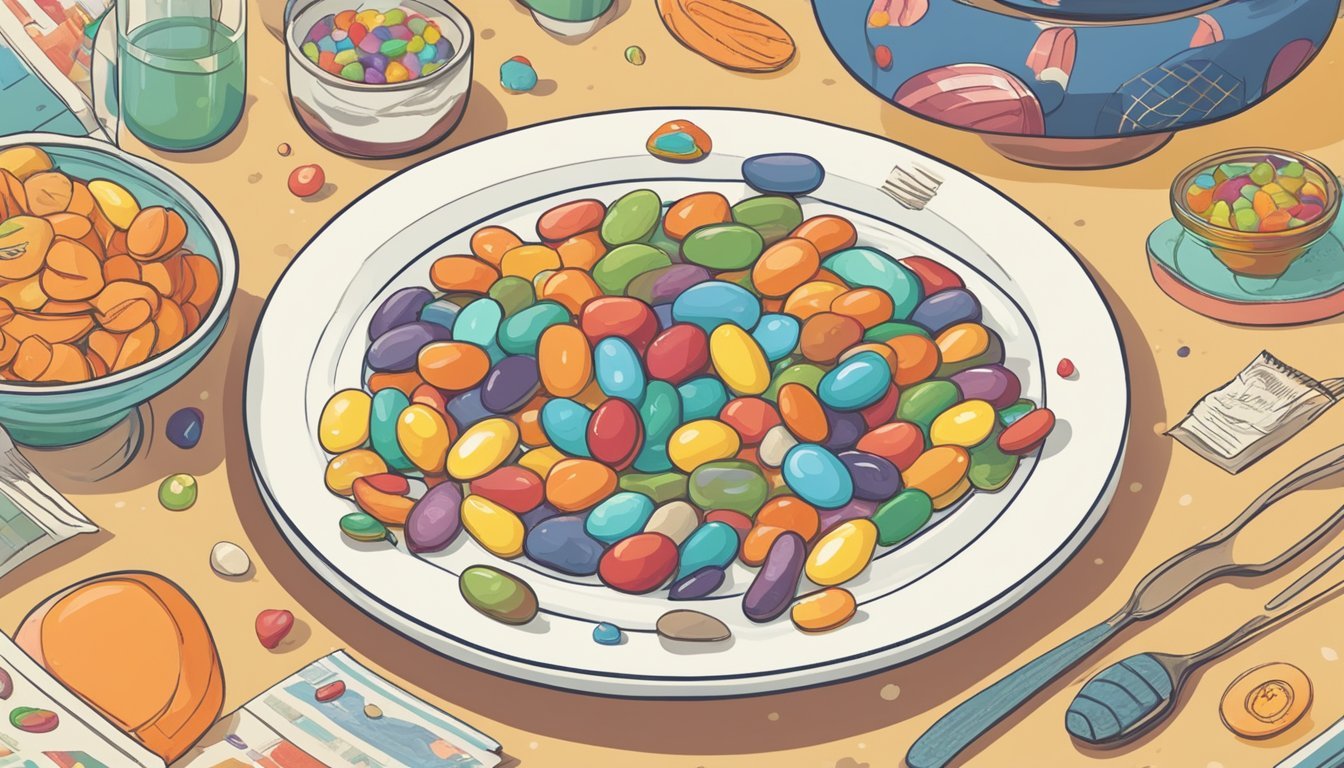How Do You Eat a Jelly Bean?
Unwrapping the Simple Snack Experience
Eating a jelly bean is a surprisingly nuanced activity that involves more than simply chewing and swallowing. The candy, known for its glossy exterior and a burst of flavor, offers numerous ways to be enjoyed, giving a personalized experience to each consumer. While some may toss a handful of assorted jelly beans into their mouth for a random symphony of tastes, others prefer a more methodical approach, savoring each bean individually to fully experience the distinct flavor designed by its colorful shell.
Jelly beans have long been a staple in the confectionary world, celebrated for their variety and playful presence in candy dishes worldwide. The tiny, bean-shaped candies come in an extensive array of flavors, from classic fruit varieties to more intricate tastes mimicking desserts or even savory dishes. The enjoyment of a jelly bean can be a simple, straightforward bite, or a complex layering of flavors, where combinations like green apple and cinnamon or caramel corn and chocolate pudding are intentionally paired to create an entirely new taste sensation.
History and Evolution of Jelly Beans
Jelly beans have a rich history that intertwines with American culture, from their surge in popularity during the American Civil War to becoming a favorite in the Oval Office centuries later. Their evolution has been marked by innovation and a vast expansion of flavor choices, cementing their place in the confectionery world.
American Civil War to Ronald Reagan
During the American Civil War, confectioner William Schraft suggested that jelly beans be sent to soldiers as a sweet treat. The candy’s firm outer shell and chewy interior made them ideal for transport. By the early 1900s, these treats were a staple penny candy across America. Their prominence continued to grow and by the 1930s, jelly beans had become a symbol of Easter due to their egg-like shape.
Former U.S. President Ronald Reagan was a notable fan of jelly beans, showcasing the candy's staying power and appeal. His fondness for the sweet made them a regular feature in the White House and during his administration.
Innovation and Jelly Belly Brand
As consumer tastes evolved, so did the jelly bean. The introduction of the Jelly Belly brand in the late 20th century marked a significant milestone. This brand became renowned for its vivid and diverse menu of flavor choices that replicated a wide array of tastes, from traditional fruity flavors to unconventional savory ones.
Innovation by Jelly Belly Description Expanded Flavor Range Introduced a diverse palette, including flavors like cherry and coconut. Novelty Flavors Created unique and playful options, such as popcorn, and even unconventional tastes like barf and stinky socks. Quality and Technique Used natural flavorings, with each bean taking up to 21 days to craft; a stark contrast to the earlier methods of production.
Jelly Belly's approach transformed the perception of jelly beans, turning them from a simple sweet treat into a gourmet experience.
Jelly Bean Basics
Jelly beans are a popular candy known for their hard outer shell and chewy inside, enjoyed by people of all ages. This section will explore the intricate process of making jelly beans, detail their ingredients, and provide dietary information.
Manufacturing Process
The manufacturing process of jelly beans is complex and can take anywhere from 7 to 21 days. It begins with boiling ingredients like sugar and corn syrup to create a liquid mixture. This liquid is then mixed with starch and flavors, and once integrated, the resultant mixture is injected into molds that are coated with cornstarch to prevent sticking. The beans are then left to dry, after which they receive several coats of sugar and finally, a shiny finish, often from beeswax or confectioner's glaze, making them attractive and giving them a longer shelf life.
Ingredients and Dietary Information
Jelly beans primarily consist of sugar and corn syrup, along with starch—typically cornstarch—which acts as a thickening agent. Some varieties may contain gelatin, affecting their suitability for vegetarians. Most jelly beans are fat free and cholesterol free, but they are high in carbs.
Nutrient Content Protein Generally Absent Sugar (per 10 beans) ~10 - 26 grams Fat None Cholesterol None Carbohydrates High (varies) Dietary Considerations May not be suitable for vegetarians (gelatin), often gluten-free, and some are labeled kosher
Many brands offer sugar-free varieties, which are commonly sweetened with artificial sweeteners. The outer shell is typically made with sugar and cornstarch, combined under heat, while the shiny exterior might include beeswax, making them non-vegan. They do not generally offer significant protein, fat, or other nutrients, with their primary content being carbs in the form of sugar.
Exploring Flavors and Textures
Eating a jelly bean is not just about a sweet treat; it's a journey through a variety of flavors and textures that can excite and surprise the taste buds.
Flavor Variety
When indulging in jelly beans, the spectrum of flavors is vast. They range from fruit flavors like Very Cherry and Green Apple to more adventurous varieties such as Buttered Popcorn and Licorice. Single flavors can be savored individually, offering a pure, distinct taste, or combined to create new and exciting experiences for one's palate. For example, combining a cinnamon jelly bean with a couple of green apple beans can result in a candy apple flavor profile.
Fruit flavors: These are often bright and easily identifiable, reminiscent of the actual fruits they represent.
Sour: Known for their tantalizing kick, sour jelly beans juxtapose sweetness with a tart twist.
Unique blends: Unconventional flavors like buttered popcorn create a novel tasting experience that can surprise the eater.
Texture and Consistency
The texture of a jelly bean is as important as its flavor. Jelly beans typically have a firm yet chewy interior surrounded by a smooth, often glossy shell made possible by a coating such as shellac. The contrast between the shell and the soft center contributes to the overall sensory experience. Additionally, the shell's firmness helps preserve the initial burst of flavor, letting one savor it as the bean is chewed.
Shell: The crisp outer layer that holds in flavor.
Chewy center: A gummy texture that releases more taste as one chews.
Texture preferences can vary around holidays; for instance, jelly beans with darker colors may be favored in autumn, while brighter colors are more popular as Easter candy. Regardless, each bean offers a snapshot of flavor intensity and textural delight for jelly bean enthusiasts to explore.
How to Eat a Jelly Bean
When eating a jelly bean, the goal is to fully appreciate the uniqueness of each flavor and the way it engages the taste buds. The method can significantly enhance the taste experience and is particularly relevant around Easter, when jelly beans are a popular treat.
Tasting Techniques
One should enjoy a jelly bean by placing it on the tongue and allowing it to rest, letting the saliva gently dissolve the outer shell. This process will enable their taste buds to detect the full range of flavors. It's essential to savor each jelly bean individually, focusing on the texture and taste as it transforms from solid to a chewier center. They might also want to cleanse their palate with water between different flavors to get a pure taste of each one.
Pairing and Combining Flavors
Those who wish to explore flavor creation can combine different jelly beans to create new taste experiences. Here's a simple guideline for pairing:
Sweet: Two Green Apple jelly beans can be paired with one Cinnamon to emulate a Candy Apple flavor.
Rich: For a S'mores-like indulgence, one can combine one Caramel Corn, two Toasted Marshmallow, and one Chocolate Pudding jelly bean.
When combining flavors, they should consider how each flavor complements or contrasts with the other to avoid an unpleasant cacophony on the taste buds.
Novelty and Fun Facts
Jelly beans are not just a candy; they are a vibrant part of popular culture and holiday traditions. These small, bean-shaped sweets have sparked innovative flavors and game-like experiences.
BeanBoozled and Harry Potter
Jelly Belly, a renowned jelly bean manufacturer, has captured imaginations with the BeanBoozled challenge. This game pairs traditional sweet flavors with identical-looking but wildly different tasting counterparts, inviting players to take a chance on what they might get. Harry Potter themed jelly beans also emerged, replicating peculiar flavors from the book series, like "earwax" and "dirt," challenging fans to taste the magical world's eccentricities.
Easter Traditions
During Easter, jelly beans become staple Easter candy, second only to the iconic chocolate bunny. They come in a spectrum of colors and flavors, fitting perfectly into Easter baskets. The small size of jelly beans allows them to be hidden alongside eggs for hunts, adding another layer of surprise for both children and adults to enjoy during the celebration.
Health and Safety Considerations
When consuming jelly beans, individuals should be mindful of allergens, dietary restrictions, and the implications of sugar intake on health.
Allergens and Dietary Restrictions
Jelly beans can contain ingredients that might trigger allergic reactions or not align with certain dietary restrictions. It is important for consumers to review the ingredient list for potential allergens like peanuts, tree nuts, dairy, or gluten. For those adhering to specific diets, jelly beans may be labeled as vegetarian or kosher; however, confirmation through the product's labeling is essential.
Sugar Intake and Health
Despite their fat-free and cholesterol-free nature, jelly beans are high in calories and carbohydrates due to their sugar content. A small serving of ten jelly beans typically contains about 41 calories and 10.3 grams of carbohydrates. Excessive consumption can contribute to a variety of health concerns, including:
Weight gain and obesity
Increased risk of heart disease
Potential for skin issues
Possible increase in anxiety
Consumers are advised to enjoy jelly beans in moderation and heed any warning labels regarding sugar content.
Storage and Preservation
Storing jelly beans correctly is paramount for maintaining their optimal flavor and texture. When jelly beans are stored appropriately, they can last for a considerable period, often beyond their "best by" date. The following are best practices for jelly bean storage:
Avoid direct sunlight: Jelly beans should be kept in a place shielded from direct sunlight. Exposure to sunlight can affect their color and taste.
Maintain room temperature: A cool, dry area at room temperature is ideal for preventing the jelly beans from becoming too hard or sticky.
Refrigerator to prolong freshness: For extended storage, jelly beans may be kept in the refrigerator. This can extend their freshness for up to about 10 months.
Storage containers:
Airtight containers: It's essential to use airtight containers or heavy-duty freezer bags if one chooses to freeze jelly beans.
Freezer storage: When frozen properly, jelly beans can maintain their best quality for approximately 12 months although they may remain safe to consume beyond this period.
The outer shell of the jelly bean is particularly susceptible to changes in the environment. Excessive moisture or heat can compromise the integrity of the shell, leading to a less pleasurable eating experience. To preserve the crisp outer shell and the chewy center, they should avoid conditions that promote staleness or mold growth, such as prolonged exposure to air or damp environments.
Cultural Impact and References
The consumption of jelly beans has transcended simple snacking and now holds significance in popular culture and presidential history. These small candies are not only a treat but also a lens into personality and tradition.
Popular Culture
In literature, the jelly bean has featured prominently as a symbol in American literature. F. Scott Fitzgerald's 1920 short story, "The Jelly-Bean," explores themes of aimlessness and social status through its central character, Jim Powell, who was referred to as a jelly bean, a slang term at the time. The candy's popularity surged.
Another pop culture phenomenon is the Harry Potter series, which introduced "Bertie Bott's Every Flavor Beans," thrilling every Harry Potter fan with the fictional depiction of jelly beans in both commonplace and bizarre flavors. This led Jelly Belly to create a real-life counterpart, providing fans with both delicious and gross flavors, bridging the gap between fictional confectionery and the real world.
Presidential Preferences
Jelly beans gained a presidential association with Ronald Reagan, who famously cherished this candy. He began eating them as a healthier alternative to smoking and continued the habit long afterwards. A specific brand, Jelly Belly, was his preferred choice. Reagan's allegiance to jelly beans was so well-known that a portrait of him made from jelly beans hangs in the Jelly Belly Factory.
Reagan was known to have a favorite flavor: licorice. The association with Reagan was leveraged by Jelly Belly, which had a spokesperson state that you could tell a lot about someone's character by how they ate jelly beans. This quote aligns with Reagan's own statement about jelly beans and character, encapsulating his fondness for the candy while subtly promoting their diversity in flavors and eating styles.








